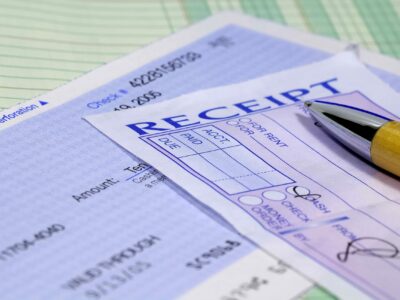
They are used across various aspects of accounting to ensure that the financial statements reflect the true value of an entity’s assets, liabilities, and equity. The following subsections delve into the most common types of contra accounts, each serving a specific purpose in financial reporting. In addition to sales returns, the most common contra revenues are sales discounts and sales allowances. A “discount,” in accounting terms, usually refers to a price reduction offered as an inducement to customers who pay their bills quickly, not to a “sale” price, which is simply incorporated into gross revenue. Sales allowances are price reductions offered to persuade customers to accept merchandise with damage or minor defects not serious enough to warrant a return. A “discount,” in accounting terms, usually refers to a price reduction offered as an inducement to customers who pay their bills quickly, not to a “sale” price, which is simply incorporated into gross revenue.
Equity Contra Account
Therefore, for these three, the debit balance actually represents a negative amount. If this aligns with your business model, it’s advisable to document each refund, return, or discount in your contra revenue account. This practice aids in gaining a clearer perspective on the distinctions between your gross and net revenue. Contra equity reduces the total number of outstanding shares on the balance sheet.
Contra assets
The key example of a contra equity account is Treasury stock, which represents the amount paid to buyback stock. These less-frequent contra accounts come into play when you need to account for changes in the outstanding liabilities for your business. For example, when your company borrows money, you would identify that debt in a Notes Payable account. Furthermore, if you subsequently pay off that debt early and capture a discount, the contra liability account — Discount Notes Payable — would record those savings.
The Significance of Contra Revenue in Bookkeeping

To compensate for those potential deadbeat customers, you can use a Bad Debts account to serve as a contra for your A/R. It’s commonplace for businesses to encounter refund requests or returns from customers, and offering discounts is also a standard practice. GAAP, the allowance for doubtful accounts represents management’s estimate of the percentage of “uncollectible” accounts receivable (i.e. the credit purchases from customers that are not expected to be paid). Contra accounts provide more detail to accounting figures and improve transparency in financial reporting.
Understanding Contra Accounts in Financial Statements
Utilizing contra accounts in financial accounting has several significant advantages that enhance financial transparency and enable more effective financial management. The accumulated depreciation will ultimately reduce the value of fixed assets when the two accounts are netted with each other. The concepts of debits and credits in accounting dictate how transactions are recorded. For instance, to increase asset and expense accounts, we simply record a debit and to decrease those accounts, we can record a credit. Pilot provides bookkeeping, CFO, and tax services for literally thousands of startups and growing businesses. To talk to an expert on our team and find out what Pilot can do for you, please click “Talk to an Expert” below, or email us at

The inventory account is also adjusted to reflect the return of goods to stock, which is recorded by debiting the inventory account and crediting cost of goods sold. This process ensures that the financial statements present the net sales figure after accounting for the products that were not successfully sold. There are four key types of contra accounts—contra asset, contra liability, contra equity, and contra revenue. Contra assets decrease the balance of a fixed or capital asset, carrying a credit balance.
- A contra liability is an account in which activity is recorded as a debit balance and is used to decrease the balance of a liability.
- Auditors examine the policies and procedures a company has in place for recording contra revenue transactions, as well as the actual entries made.
- This involves debiting a sales returns and allowances account, which is a contra revenue account, and crediting the accounts receivable or cash account, depending on whether the sale was on credit or for cash.
- Investors, creditors, and analysts rely on transparent and accurate financial data to make informed decisions.
- If a company offers an early payment discount (such as 1% or 2% of the invoice amount if it is paid within 10 days instead of the required 30 days) the amount of the discount is recorded in the contra revenue account Sales Discounts.
- In your income statement, the gross sales of $50,000 are offset by the sales returns and allowances of $1,000.
For example, if a piece of heavy machinery is purchased for $10,000, that $10,000 figure is maintained on the general ledger even as the asset’s depreciation is recorded separately. It can help companies https://www.bookstime.com/ see the complete picture of their income and expenses and their equity or net worth. All in all, contra accounts are an important tool for businesses to use to understand their financial standing better.
We will define what contra accounts are, the types of contra accounts and provide examples to illustrate. This topic is essential because it directly impacts how stakeholders perceive a company’s performance. Investors, creditors, and analysts rely on transparent and accurate financial data to make informed decisions. Contra revenue adjustments serve as an important tool in painting a realistic picture of a company’s sales activities. The net amount – i.e. the difference between the account balance post-adjustment of the contra account balance – represents the book value shown on the balance sheet.
- It’s important to track contra revenue as it impacts the net revenue reported on the income statement, which in turn affects the business’s profitability and overall financial health.
- If your company has minimal contra revenue activity, it is acceptable to record these transactions within the revenue account.
- Because contra asset accounts are used so frequently, it’s worth spending a little bit more time on them here, including common subtypes.
- So as values shift depending on real-world factors, rather than making deductions or adjustments to the original or “parent” account, you would record these changes in the contra account instead.
- Last, for contra revenue accounts there are sales discounts, sales allowances, or sales returns.
It’s important for businesses to monitor trade discounts to analyze their impact on sales volume and profitability. When a contra asset account is first recorded in a journal entry, the offset is to an expense. For example, an increase in the form of a credit contra revenue to allowance for doubtful accounts is also recorded as a debit to increase bad debt expense. In the realm of accounting, various techniques are used to ensure financial statements provide an accurate and comprehensive view of a company’s financial health.
- The difference between an asset’s account balance and the contra account balance is known as the book value.
- By understanding and effectively utilizing contra revenue accounts, businesses can gain valuable insights into their operations, customer satisfaction, pricing strategies, and cash flow management.
- The allowance for doubtful accounts is used to reduce the net income by the estimated amount of uncollected receivables.
- Our accounting firm is a professional service firm that focuses on providing expert advice in accounting and tax.
- And currently, Show-Fleur anticipates that it could only sell each one for roughly $50 thousand, meaning the depreciation per vehicle is $100 thousand.
- One other type of account is the contra account and for accountants, this is a must-know.